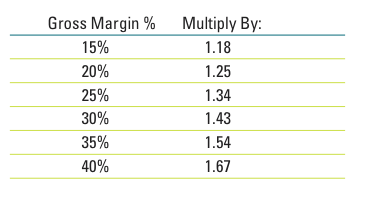Back in high school, margins were the edges of the paper that you made extra-large so your book report filled more pages. At the counter, you want extra-large margins so your daily deposit has more zeros. There is a difference between “margin” and “markup,” and what you don’t know about them is potentially costing you money. Even though most part stores have a point-of-sale system that calculates pricing, there are times when the parts specialist has to break out the calculator (or even a pen and paper!) to figure out the resale price of a part.
This is usually where a parts specialist leaves some money on the counter, by miscalculating the true profit margin of what they are selling. Thirty percent (30 percent) is a great profit margin for resale, and is easily calculated. It is the example that we will use here, but other percentages can easily be substituted as needed. Most people would assume that if you want to make 30 percent on a $100 part, you would multiply the cost of a part by 1.30 and call it good. That is called “markup,” but it’s not as profitable as you think.
If you want to make an actual 30 percent profit margin, you would divide that cost by 70 percent, which is the remaining part of 100 percent (shown below as 0.70).
For example:
No. 1 (markup method) $100.00 × 1.30 = $130.00
No. 2 (margin method) $100.00 ÷ 0.70 = $142.86
There is a $12.86 difference between the 30 percent markup and 30 percent margin methods shown here. If you are using simple markup to calculate your selling price, chances are your customer is happy about your great prices, but your accountant is wondering why your profits are so low.
Here’s why: Using example No. 1, the selling price ($130.00) minus the cost ($100.00) equals $30.00. Divide that by the selling price ($130.00), and it gives you a gross profit margin of only about 23 percent.
$30.00 ÷ $130.00 = .230769, or 23.0769 percent
Do the same calculation with example No. 2 and you arrive at the 30 percent that we were looking for originally:
$42.86 ÷ $142.86 = .300014, or 30.0014 percent
Now, math was my least favorite subject in high school, and I don’t expect anyone to go through this whole process for every sale they make. Instead, here’s a chart of some popular gross margin percentages and an easy multiplier that will get you close to that intended gross profit margin without a lot of extra math.









